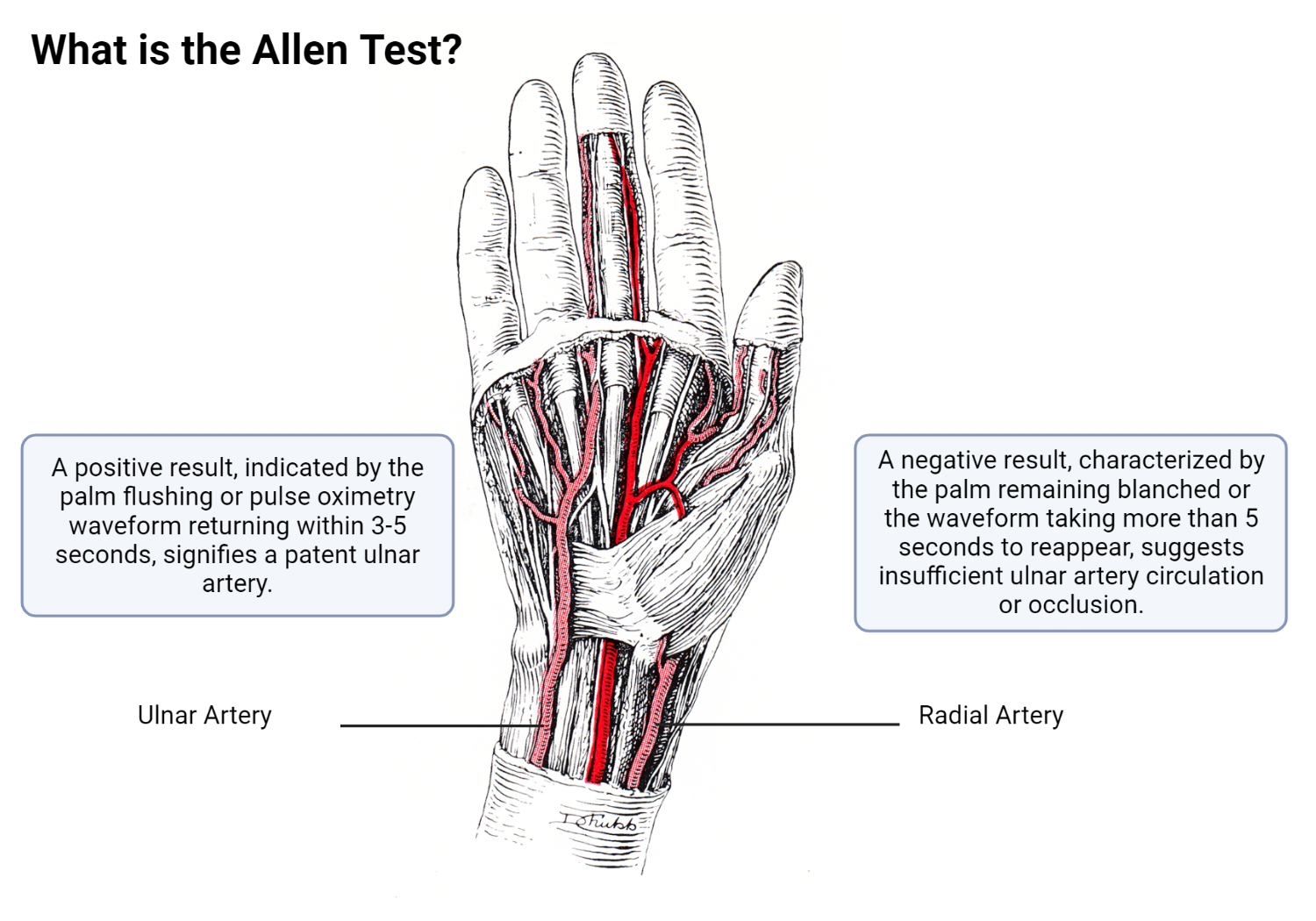Physicians frequently perform interventions on the radial artery, such as arterial blood gas assessment, blood sampling, or invasive blood pressure monitoring. It is essential to evaluate the adequacy of ulnar arterial collateral circulation to minimize the risk of hand ischemia following these procedures. This article discusses the importance of assessing ulnar artery patency and presents two techniques for performing this assessment in different patient populations.

Importance of Assessing Ulnar Artery Patency
The radial and ulnar arteries are the primary blood supply sources to the hand. In many cases, the ulnar artery serves as a collateral circulation pathway if the radial artery becomes compromised. Before performing interventions on the radial artery, physicians must ensure that the ulnar artery is patent and can provide adequate blood flow to the hand. Evaluating the ulnar artery's collateral circulation can help physicians determine if it is safe to proceed with radial artery procedures without causing hand ischemia.
Techniques for Assessing Ulnar Artery Patency
There are two techniques for evaluating ulnar artery patency: the Change in Skin Color Technique and the Pulse Oximeter Technique. The first method is suitable for awake and cooperative patients, while the second method can be used for sedated patients or those unable to cooperate.
Change in Skin Color Technique
- Position the patient's hand palm-side up and stabilize it.
- Palpate the radial and ulnar pulses at the proximal skin crease of the wrist, below the thumb and the fifth digit, respectively.
- Firmly compress both arteries using three fingers or the thumb.
- Instruct the patient to clench and unclench their fist ten times, followed by relaxing their hand in a slightly flexed position. The palm should appear pale. Avoid hyperextension of the hand and wide separation of the fingers to prevent false positive results.
- Release the ulnar artery and measure the time it takes for the palm and thumb to regain their normal color.
Pulse Oximeter Technique
- Position the patient's hand palm-side up and stabilize it.
- Attach a pulse oximeter probe to any finger on the assessed hand. Alternatively, use a Doppler to evaluate blood flow.
- Palpate the radial and ulnar pulses at the proximal skin crease of the wrist, below the thumb and the fifth digit, respectively.
- Firmly compress both arteries using three fingers or the thumb until the pulse oximetry waveform disappears.
- Release the ulnar artery and measure the time it takes for the pulse oximetry waveform to reappear.
Interpreting the Results
A positive result, indicated by the palm flushing or pulse oximetry waveform returning within 3-5 seconds, signifies a patent ulnar artery. A negative result, characterized by the palm remaining blanched or the waveform taking more than 5 seconds to reappear, suggests insufficient ulnar artery circulation or occlusion.
Conclusion
Assessing ulnar arterial collateral circulation is critical for physicians performing interventions on the radial artery. The techniques presented in this article can help determine if the ulnar artery provides adequate collateral circulation to the hand, thereby reducing the risk of hand ischemia following radial artery procedures. Employing these techniques can contribute to improved patient safety and outcomes.
Reference
Orient, JM. Sapira's Art and Science of Bedside Diagnosis. 4th ed. Philadelphia, PA: Lippincott Williams & Wilkins. 2010;383.

